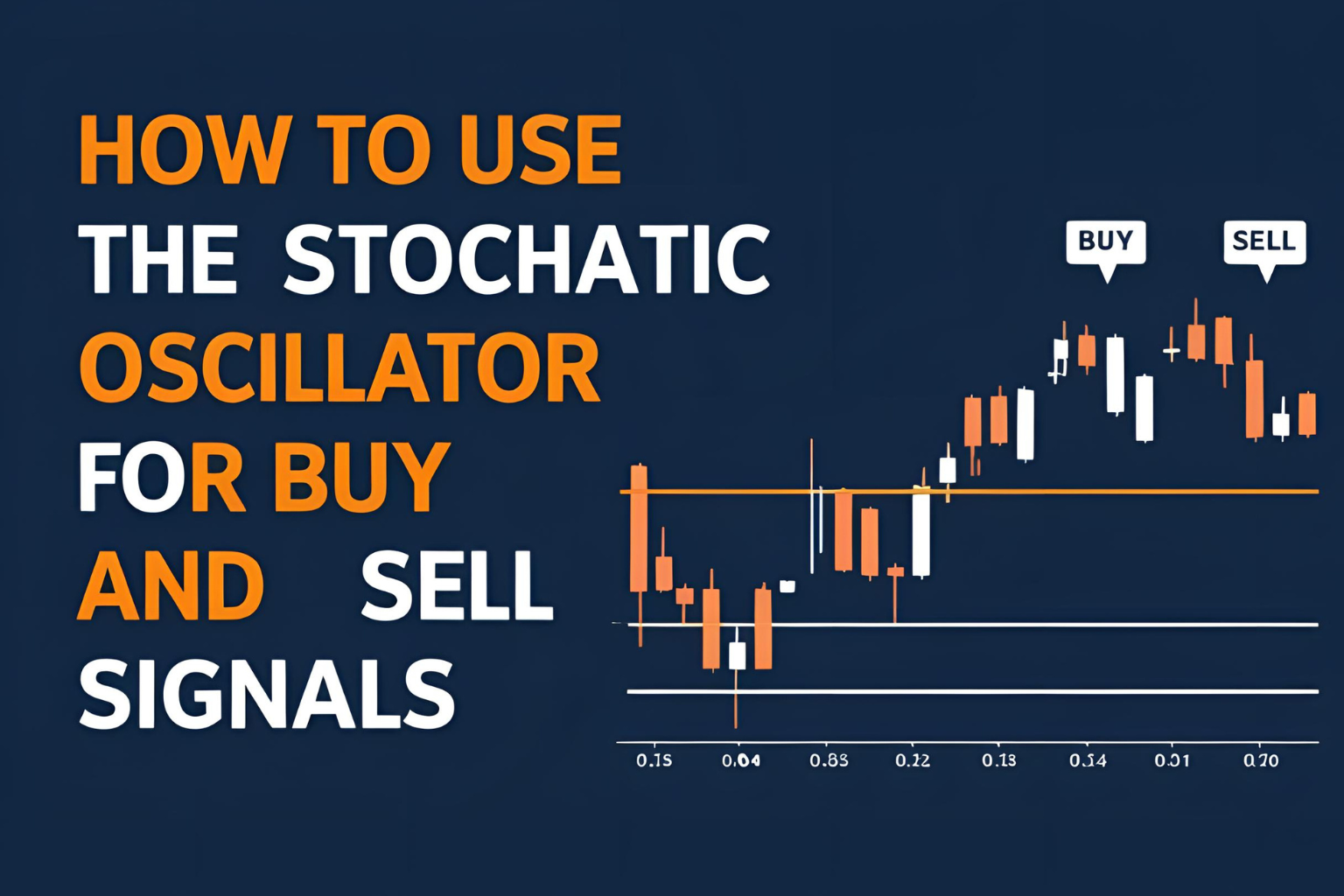How to Use the Stochastic Oscillator for Buy and Sell Signals
Introduction
The stochastic oscillator isn’t just a momentum gauge—it’s also a practical tool for generating entry and exit signals. By understanding how to interpret crossovers, overbought/oversold zones, and divergence patterns, traders can sharpen their strategies and improve timing. This guide explains how to use the stochastic oscillator effectively for buy and sell decisions.
The Core Concept of Signal Generation
The stochastic oscillator works on the idea that momentum changes direction before price does. This behavior can be used to anticipate turning points in the market.
It includes two main lines:
- %K – The current level of the oscillator
- %D – The moving average of %K (signal line)
When these lines cross, it creates a signal.
Key Buy and Sell Signal Techniques
1. Basic Crossover Signal
- Buy Signal: When %K crosses above %D in the oversold zone (below 20).
- Sell Signal: When %K crosses below %D in the overbought zone (above 80).
2. Divergence Signal
- Bullish Divergence: Price makes a new low, but the oscillator makes a higher low → potential buy signal.
- Bearish Divergence: Price makes a new high, but the oscillator makes a lower high → potential sell signal.
3. Breakout Confirmation
Use stochastic as confirmation when:
- A breakout occurs from a price range or pattern.
- Stochastic is also breaking out from a key level (e.g., crossing 50 upward).
Example Chart Signal (Conceptual Overview)
Scenario: Stock XYZ is trading at a local low.
- Stochastic %K is at 15 and %D is at 20.
- %K crosses above %D → this suggests a buy signal is forming.
If supported by rising volume or trendline support, the signal becomes stronger.
Important Tips for Using Stochastic Signals
- Avoid trading only on signals. Confirm with support/resistance, volume, or trendlines.
- Use shorter settings (like 5,3,3) for faster signals in intraday trading.
- In trending markets, stochastic may stay overbought or oversold for extended periods—be cautious.
Best Timeframes for Buy/Sell Signals
| Timeframe | Use Case |
|---|---|
| 1-min to 15-min | Scalping or quick intraday trades |
| 1-hour to Daily | Swing trading and short-term analysis |
| Daily to Weekly | Position trading and long-term setups |
Conclusion
The stochastic oscillator offers powerful signal-generating capabilities through crossovers and divergence patterns. When paired with other technical tools, it becomes a valuable component of any trader’s toolkit. The key lies in confirmation and disciplined execution.
FAQs
Q1. What is the most common buy signal in stochastic oscillator?
When %K crosses above %D below the 20 level (oversold zone).
Q2. Are stochastic oscillator signals reliable?
They can be, especially when confirmed with other indicators or chart patterns.
Q3. Can stochastic generate false signals?
Yes, especially in strong trends. Always use confirmation.
Q4. Should I use fast or slow stochastic settings for signals?
Slow settings (like 14,3,3) are smoother and more reliable; fast (5,3,3) reacts quicker.
Q5. Is stochastic oscillator better for range or trending markets?
It works best in range-bound conditions. In trends, it can give early or misleading signals.





